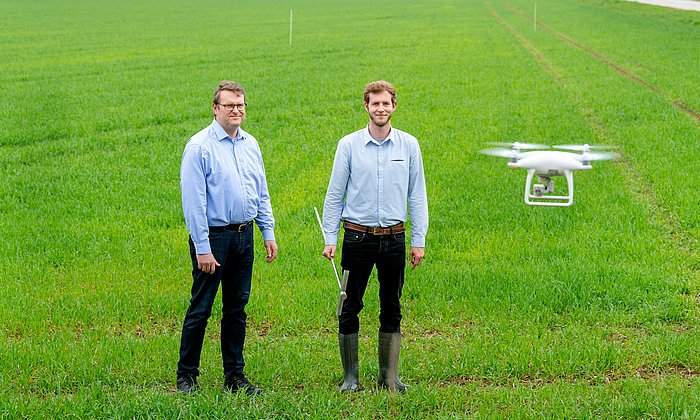Interview with TUM Professor Roosen about consulting for the EU
Making sustainable food consumption easy

What influences which food we buy?
Buying food is a very easy purchasing decision. We don't think about it for very long and often make habitual purchases. In our review paper for the European Commission, we found that there are many elements in the immediate consumer environment that influence food choice, such as prices, supply, or what social context you are in. Above all, we must try to create incentives in this environment so that consumers choose healthier and more sustainable products.
Why do attitudes to sustainable food from the surveys often not reflect in consumer behavior?
We call this effect the attitude-behavior gap, which means that consumers basically have a very positive stance toward sustainable products, but do not act on this when making purchasing decisions. There are many factors to this, the willingness to pay, but also the fact that the choice does not exist. With animal welfare products, for example, we found that increasing the number of these products makes it more likely that customers will choose products with higher standards.
What needs to happen to promote sustainable and healthy diets?
Our expert group’s approach is to consider the whole food system. Policies need to be coordinated. It must be prevented that measures are intended to promote sustainable food on the one hand, but then contradictory production methods are being subsidized.
The responsibility must not be solely placed on the consumer. Policymakers must support them to ensure they have the food security and financial means to be able to afford to buy such products. In addition, the whole food environment must be geared toward making sustainable consumption easy.
It is a long way to go from EU level to individual consumer choice. How can we succeed in using EU legislation to influence purchasing behavior?
Consumers must be supported in expressing their preferences when making purchases. For this to happen, laws need to be harmonized across Europe. The European Union can establish coherence in initiatives taken by the Member States and promote common standards. For example, there could be recommendations with regard to advertising aimed at children. Then not every country has to develop its own standards.
The EU itself has possibilities in terms of consumer information on packaging, which is mainly regulated at EU level. The Farm to Fork Strategy, an agricultural policy measure designed to help make the EU food system more sustainable, has several objectives. For example, reducing food waste and expanding organic farming are already established as set targets. Demand must be generated to achieve this. Simplified nutrition labeling on packaging can help by extending it to the area of sustainability. For consumers, this will make the production process more transparent when purchasing from retail.
Which measures do you think are most effective in helping consumers?
I believe that the main starting points are to coordinate measures and draw up comprehensive policy packages. In order to change behavior, it is important to coordinate the various measures and to select several approaches. Not only labeling, but also the choices in a standard supermarket need to be the subject of discussion. For example, can we stipulate that a certain proportion of products must comply with established criteria?
How we deal with new media is another issue. For example, if we ban or restrict advertising aimed at children, we can hardly prevent children from seeing the advertising on Instagram or TikTok anyway. Today, we have far fewer opportunities for intervention than in classic television advertising on the children’s channel.
Technical University of Munich
Corporate Communications Center
- Magdalena Eisenmann
- presse@tum.de
- Teamwebsite
Contacts to this article:
Prof. Jutta Roosen
Technical University of Munich
Chair of Marketing and Consumer Research
Tel. +49 8161 71-3318
jroosen@tum.de

